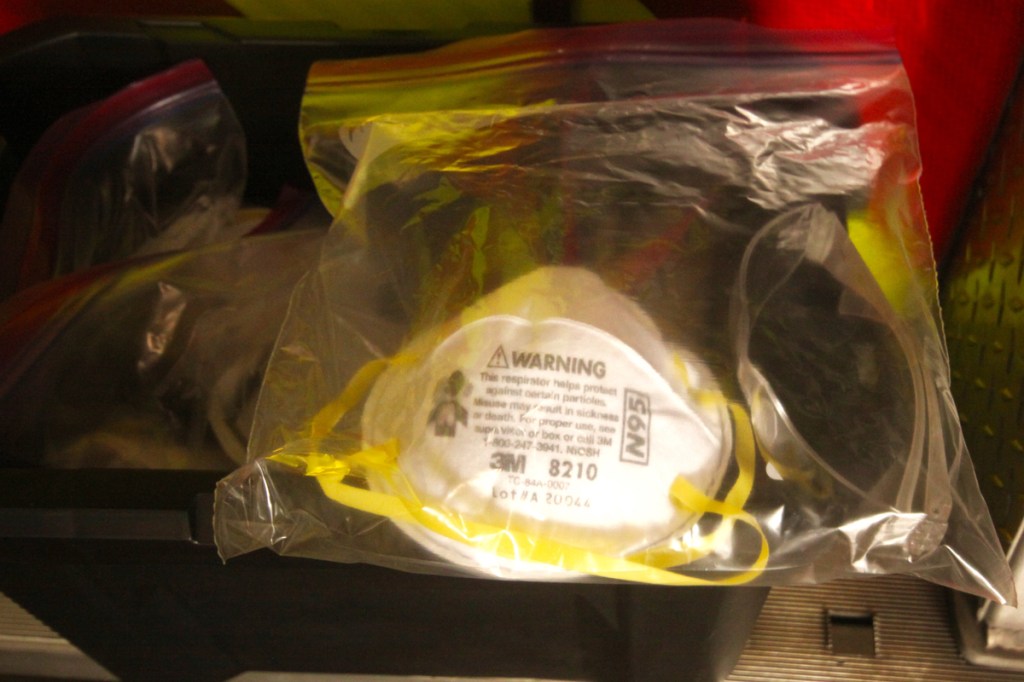Saturday case total caps bad week for COVID-19 in Louisiana
Published 2:54 pm Saturday, June 20, 2020

- COVID-19 coronvirus respirator
Almost 900 new identified COVID-19 infections were logged in the latest Louisiana Department of Health update, making this week’s growth in that category the worst since early April.
Trending
The 870 new cases added Saturday joins the 928 new infections reported Wednesday as the worst daily rises since April 3. Totals from Thursday and Friday were the worst reported since April 9.
Overall, LDH reported 49,385 identified cases of COVID-19 Saturday, an increase of 870, or 1.79 percent, from Friday’s total of 48,515. Recalculating the state’s numbers for Thursday based on the daily totals released after the state’s corrections to its data, Friday’s increase of 787 cases was a 1.65 percent increase over Thursday, and Thursday’s total of 47,728 was a 1.62 percent increase over Wednesday.
The state cumulative tally of COVID-19 deaths rose by 20, going from 2,972 in Friday’s report to 2,992 on Saturday. That rise represents an increase of 0.72 percent. As of Monday, 112 of those deaths were still considered probable COVID-19 fatalities pending final testing. The number of probable deaths attributed to COVID-19 is updated each week on Monday.
Trending
The number of patients hospitalized with COVID-19 rose by 13, to 574. The number of patients statewide on ventilators dropped by two, to 73. In District 4, which covers Acadiana, the number of COVID-19 hospitalizations remained at 57, with the number of patients on ventilators dropping by one, to six.
In Iberia Parish, the number of cases rose by six, to 465. The number of deaths remained at 42, with 6,856 tests performed in the parish. The LDH incidence map shows that from June 4 to June 10 the parish had 23.96 cases reported per 100,000 population.
St. Martin Parish’s number of identified cases rose by 26, to 483, with 7,086 tests performed. The LDH incidence map shows that from June 4 to June 10, the parish had 72.73 cases reported per 100,000 population. The number of deaths remained at 28.
In St. Mary Parish, the total cases rose by five, to 378, after 4,761 tests. The number of COVID-19 deaths remained at 35. The LDH incidence map shows that from June 4 to June 10 the parish had 28.13 cases reported per 100,000 population.
In Lafayette Parish, the reported case count rose by 54 to 1,364 Saturday. The number of deaths rose by one, to 33. There have been 31,957 tests reported in the parish. The LDH incidence map shows that from June 4 to June 10, the parish had 81.97 cases reported per 100,000 population.
The number of cases in Jefferson Parish was reported up 105, at 8,647 on Saturday, compared to a rise of 43, to 7,491 cases, in Orleans Parish. Jefferson Parish’s testing has been more aggressive than that in Orleans — 70,763 tests in Jefferson compared to 62,823 in Orleans.
The more urban Orleans Parish has seen 52 more deaths than its suburban neighbor. Orleans Parish reported deaths rose by three, to 529. Deaths in Jefferson also climbed by three, to 477 fatalities. The LDH incidence map shows that from June 4 to June 10, Jefferson Parish had 56.68 cases reported per 100,000 population. In Orleans, that number was 28.13 per 100,000.
The number of Louisiana COVID-19 cases identified in the 50-59 age range rose to 8,226, including 262 fatalities. The 18 to 29 age group had 8,203 cases and 10 reported deaths, followed closely by the 30-39 age group, with 8,013 cases and 53 deaths. In the 40 to 49 age group, the number of cases has risen to 7,948 with 109 deaths reported.
The 70 and above group case count rose to 7,836. The number of deaths in that group rose to 2,022 — the largest number of fatalities for any age group by far, more than the number of deaths in all other groups combined and two-thirds of the total COVID-19 attributed deaths in the state.
In the 60 to 69 age group, there were 6,831 cases reported and 533 deaths. This age group has the second-highest number of deaths, behind only the 70 and above demographic group.
The under 18 group, the smallest demographic segment, had 2,114 cases total, with three deaths reported.
Louisiana has performed more than 600,000 COVID-19 tests so far. The state’s reference laboratory has performed 30,438 COVID-19 tests. Commercial labs have contributed 574,378, for a total of 604,816 tests.
By gender, the state’s daily report shows women making up the largest part — 56 percent — of the identified COVID-19 cases in the state, with men comprising 42 percent and the other two percent identified as unknown or other. On the other hand, the COVID-19 deaths are predominantly among men, 53 percent to 47 percent for women.
The number of presumed recovered cases, as of June 14, rose to 37,017. In order to be considered recovered, a living patient must either be out of the hospital and 14 days past a positive test result, or 21 days past a positive test date if their hospitalization status is unknown. As with the number of probable fatalities, that statistic is scheduled to be updated weekly, on Monday.
The breakdown of COVID-19 fatalities by ethnicity and race showed some change last week, with the percentage of those deaths in the black community making up more than half of all cases.
Initially, LDH reported that 70 percent of all COVID-19 deaths in the state were in the black community. That number has since hovered in the mid-to-high 50-percent range. It was at 53.22 percent Monday, with Caucasian victims making up 44.88 percent of all cases. Other races identified include Asian at 0.76 percent, other at 0.59 percent, unknown at 0.28 percent, Native American/Alaska Native at 0.10 percent and Native Hawaiin/Pacific Islander at 0.08 percent. That data is only reported once a week.
The number is still disproportionate to the demographics of the state’s population. African Americans make up about 40 percent of Louisiana’s populace.
The top three underlying conditions among COVID-19 deaths in the latest report were hypertension (59.05 percent), diabetes (36.5 percent), and cardiac disease (20.13 percent).
Other factors included chronic kidney disease (19.65 percent), obesity (19.17 percent), congestive heart failure (13.37 percent), pulmonary issues (11.75 percent), neurological disorders (11.44 percent), cancer (7.38 percent), and asthma (4.14 percent).


